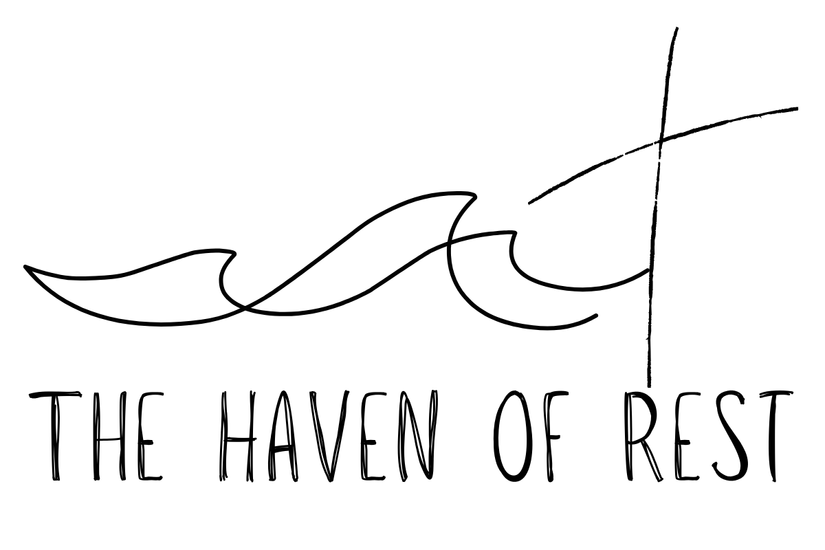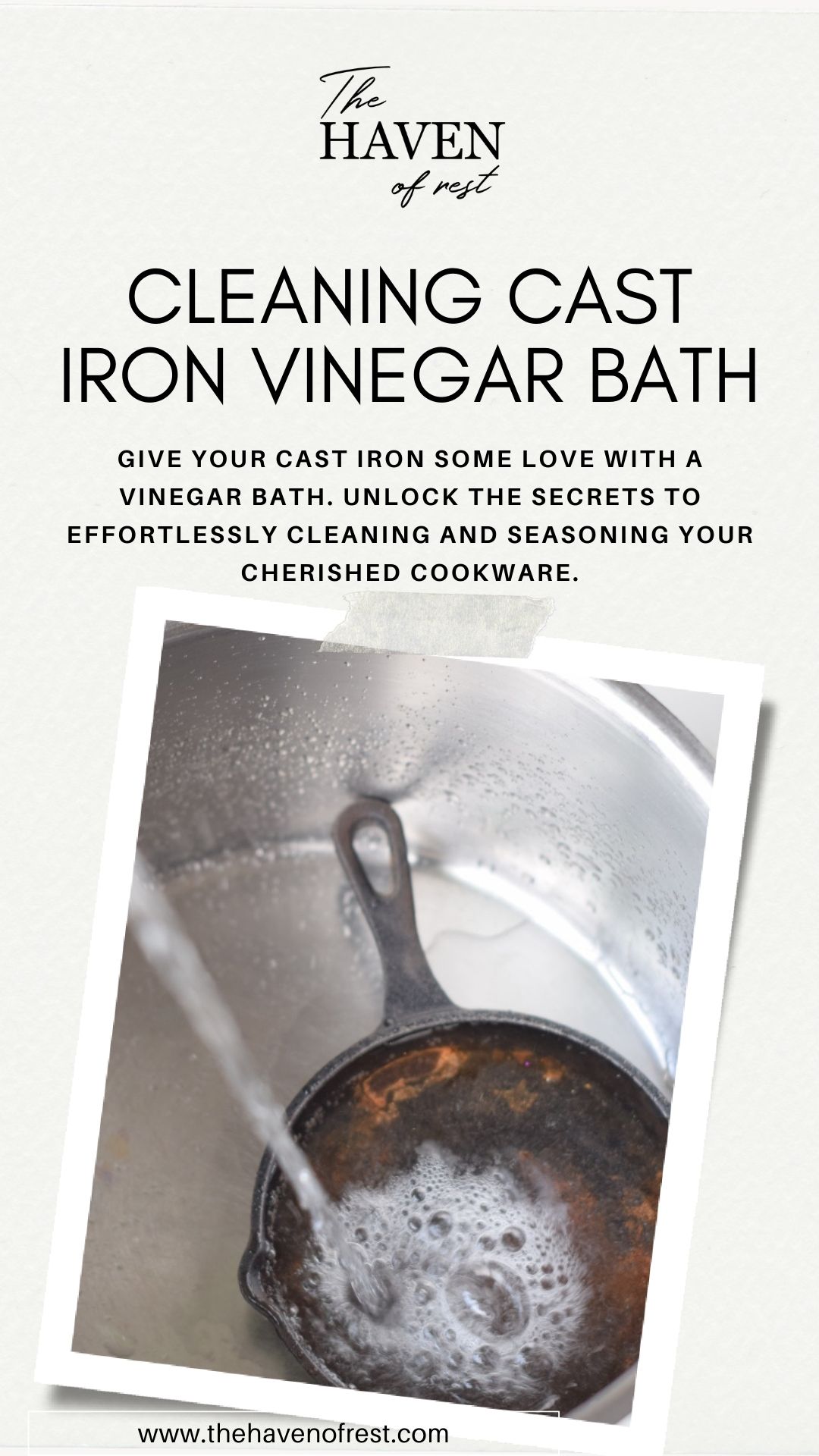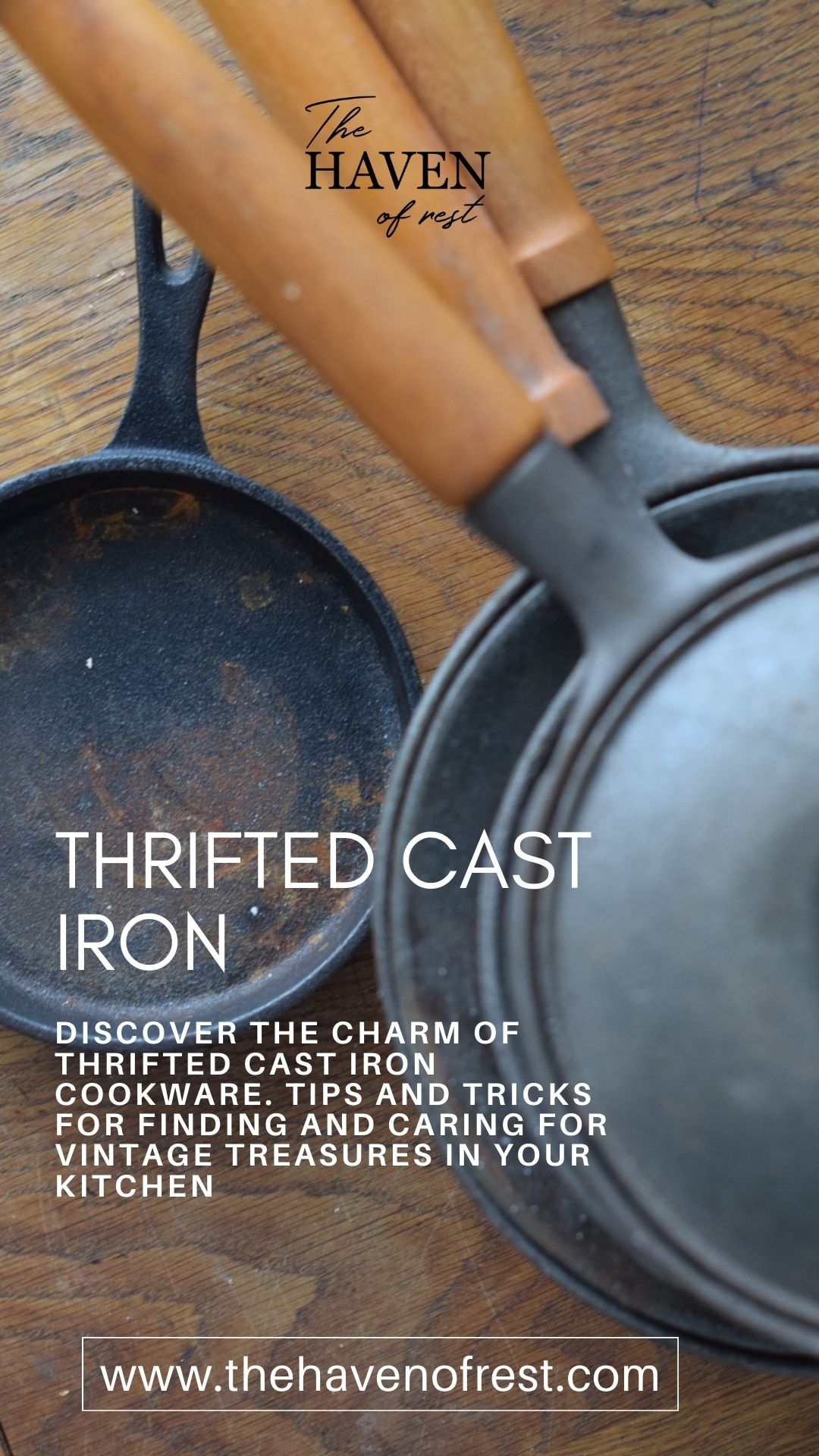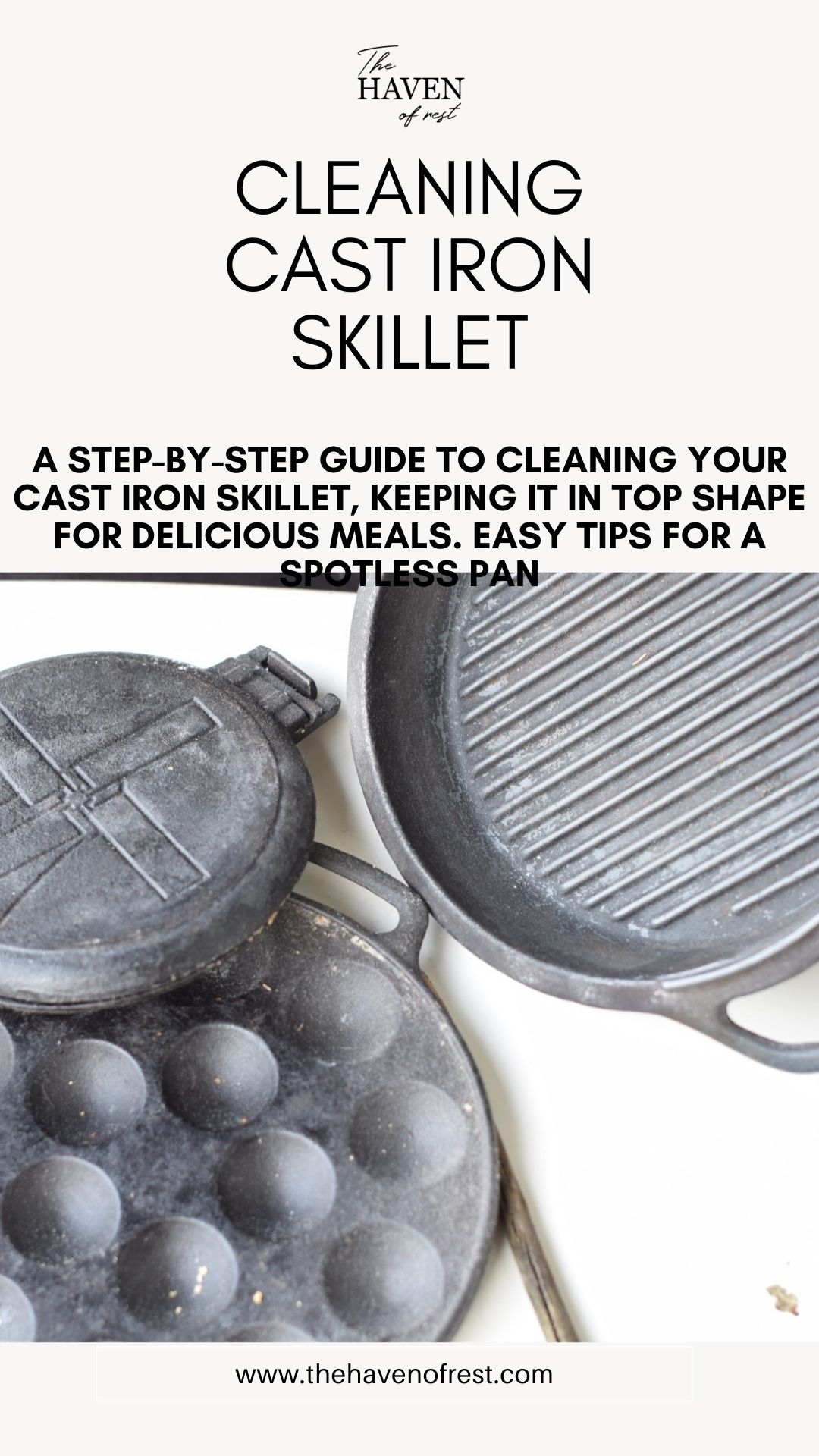I love thrift shopping because I never know what gems are waiting for their next owner. I have a few things I always check for in the thrift store and cast-iron cookware is one of them. They will last beyond the next generation if well cared for.
Let me show you how I restore thrifted cast iron. With some basic steps, you can turn rusty cast iron items into as good as new cast iron.
This post may contain affiliate links. That means I make a small commission for purchases made through these links, at no extra cost to you. All opinions are my own. You can read my full disclosure here.
Table of Contents
About Cast Iron
A little bit about cast-iron cookware. The name already tells what it is. It’s a pan, skillet, etc. made by melting iron ore with a carbon percentage of more than 2%. It’s often made of a mix of iron, carbon, silicon, and manganese. The melted mix is then cast into a mold and voilà there’s your cast-iron skillet.
The best thing about cast-iron cookware is its versatility. It can be used in the oven (only when the handles are oven-proof as well!), on open fire, induction, gas cooktops, wood-fired stoves, ceramic cooktops, etc. It is available in lots of sizes and shapes and, all cast iron items have their own distinct purposes. Let’s look at some different cast iron items.
Dutch Ovens
Dutch ovens are sturdy cast-iron pans that have a lid. Sometimes the lids are made in such a way that you can place hot embers on top. That makes this particular pan very versatile. A Dutch oven is fantastic for making homemade bread. I even consider it one of the basics a beginner baker needs. Because it’s a great heat retainer and has a snug closing lid, the bread that’s baked in a Dutch oven gets this beautiful, cracked open crust almost any time.
Cast-iron Skillets
A cast-iron skillet is great for searing meat, baking an egg, pancakes, and sauteeing vegetables. Some iron skillets have removable handles so they are oven-safe as well.
Cast-iron Pans
Cast-iron pans are super versatile and great for bread baking, boiling an egg, and even searing meat when your cast-iron skillet is taken.
Cast iron cooking isn’t hard. You just need to heat your pans well before you use them. However, this doesn’t apply when you use them just to boil water. Then you just add the water to the “cold” iron pots then heat. It might take some time to adjust from non-stick to cast-iron cookware, but I’m pretty sure you’ll love it.
Cast iron is also widely available. You could buy all new cast iron, or find a vintage gem in your local thrift store or a yard sale. Wherever you find your first piece of cast-iron cookware, be sure to have some good oven mitts ready for your first use because cast iron gets hot and stays hot for a while! :)
Finding vintage cast iron cookware
For me, the best place to find a new cast iron pan is in one of our local thrift stores. We’re blessed to have a few really good and affordable ones in the area. If you don’t live near a thrift store you can look for cast iron cookware at flea markets, on a garage sale, in an antique shop, or while bargain hunting for old cast iron pans at yard sales. Vintage shops might carry some one-of-a-kind vintage pans too.
A thrifted or vintage cast iron pan should be in generally good shape. Don’t shy away from a good rusty cast iron skillet. With a little elbow grease, even a rusty pan can be turned into as good as a new cast iron pan. The good news is that even severe rust can be removed. It’s a good idea though to check the handles. Especially if they’re removable and haven’t been used in a long time. Make sure they’re still sturdy and safe to use.
Also, if you’ve already got an old cast iron skillet that’s seen better days, there’s a good chance you can bring that rusty pan back to good shape with a little effort. Just follow these basic steps to tackle that rusty cast iron pan, and in no time, you’ll have an old pan that’s ready for action again!

You might also like…
Cleaning Methods for Cast-iron
There are different tried-and-true methods of cleaning cast-iron cookware. Safety is a top priority, whatever method you use. I can’t emphasize enough to keep your cast-iron cleaning project out of reach of children and pets.
Safety is paramount when dealing with cast-iron cookware, especially around curious little ones and pets. Please ensure that the cleaning bath is placed well out of their reach to prevent any accidents that could involve the cast-iron cookware and the cleaning solution potentially harming your child or pet. Their safety is a top priority, so let’s keep them protected from any potential accidents.
That being said, let’s gather our supplies so we can start.
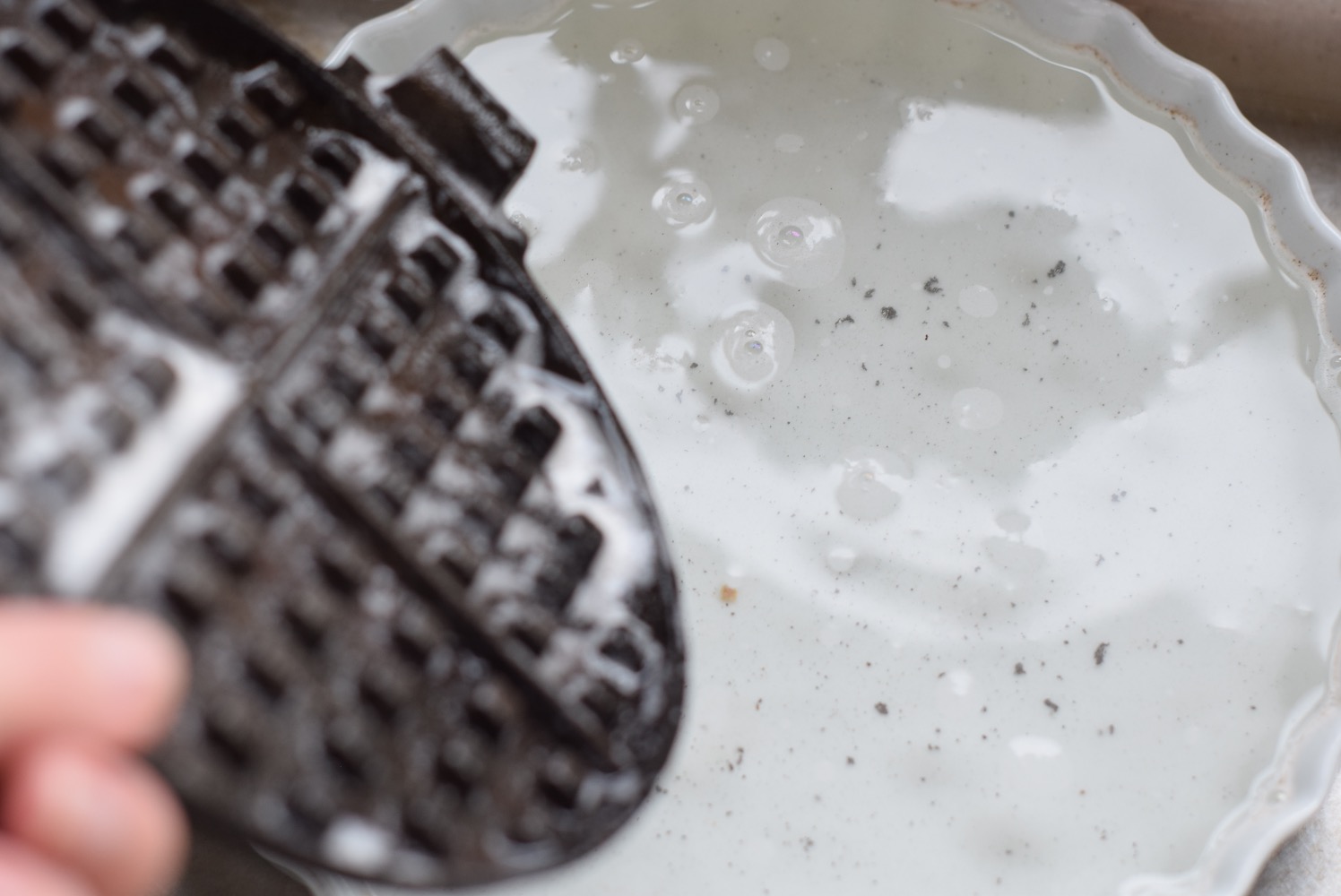
Supplies for cleaning cast-iron cookware
- Paper towel
- Steel wool (preferably even a non-scratch scrubber. Don’t use a plastic scrub brush or wire brush)
- Aluminum foil
- Mild dish soap
- Tub or bucket big enough to fully submerge the pan
If you’re restoring a thrifted cast iron cookware, the protective season is probably gone. This can also happen if you’re cooking a lot of acidic foods like tomato sauce or dishes with citrus in your cast iron. Acid can strip away the seasoning of your cast iron. The seasoning is that naturally built-up layer that makes your pan non-stick.
Start by cleaning your cast iron with hot water and some mild dish soap to remove any old seasoning. To make it easier to remove oil and built-up grease, could pre-heat the cast iron on low heat and then wash it in some soapy water. You may have to apply a little elbow grease to remove the old seasoning. Rinse well with warm water.
To get the best results when cleaning your cast-iron pans, I recommend using a non-scratch scrubber and some hot soapy water as the first step. Some suggest using oven cleaning, but since the food will be directly in contact with the surface of the pan I don’t recommend using oven cleaner to clean a cast iron pan. It’s okay if not all dark spots come off right away.
If you have a self-cleaning oven you might be able to remove a lot of the grease and dark spots by placing the cast iron in the oven and using the self-cleaning cycle. Keep in mind though that oil and grease may drip from the pan into the oven. The pan gets very hot, so handle it carefully when you take it out of the oven.
Vinegar Bath for Cast-Iron
Cleaning surface rust off your cast iron cookware is a breeze if you give it a vinegar bath. You’ll need some sort of bucket or tub, the size depends on the size of your cast iron cookware. I’ll explain in a few easy steps how you can clean your cast iron pots and pans with vinegar and a little elbow grease giving your cast-iron an as good as new cooking surface.
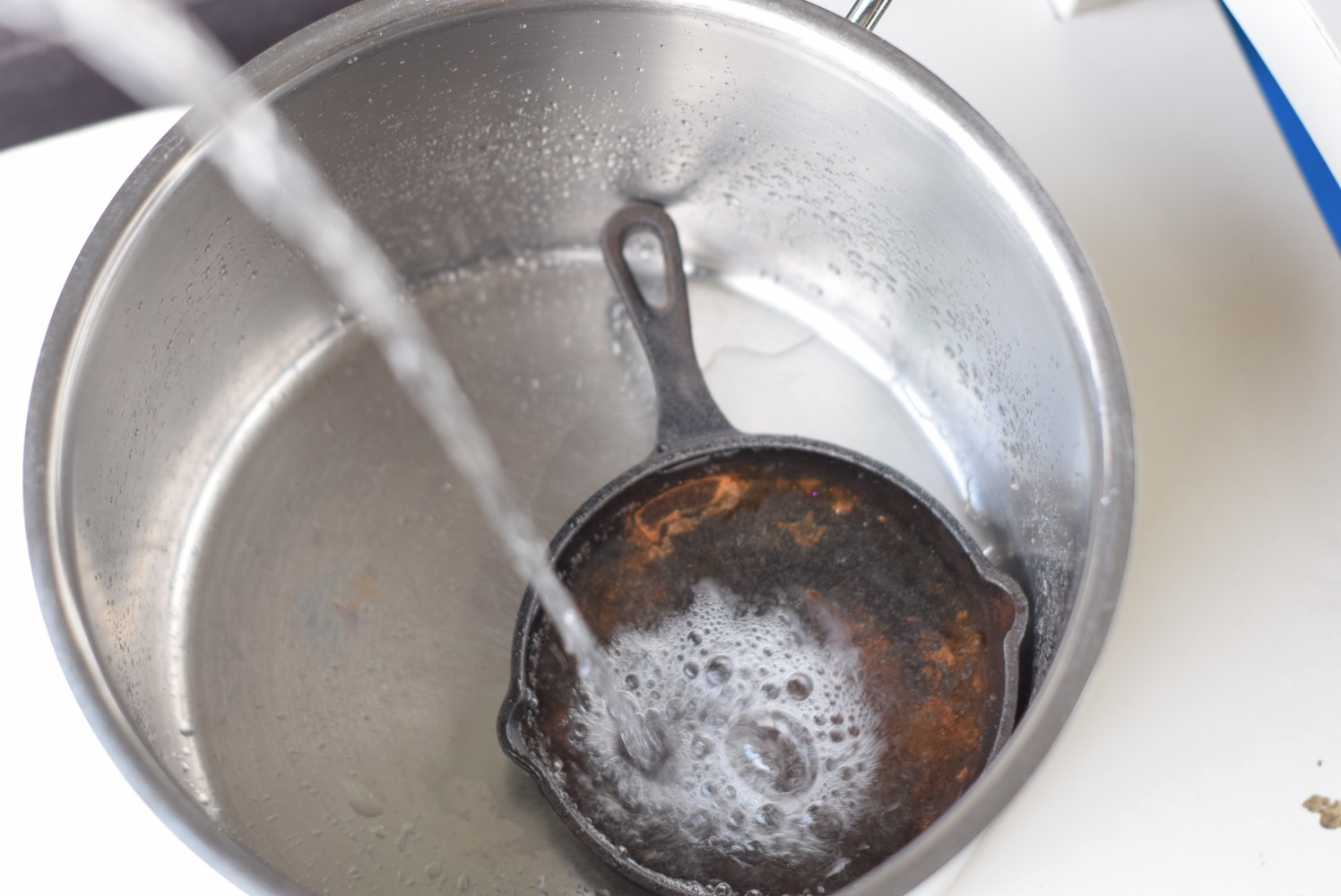
The best way to remove surface rust from your cast iron pots is by giving is a vinegar bath. Make sure your tub is big enough to fully submerge the entire pan.
- Take your cast-iron cookware and place it in the vinegar bath. Leave for about 24 hours.
- After 24 hours, you should see some rust coming off the cast-iron cookware. You could leave the cast iron for another 12-24 hours if there is still a lot of rust. A scrubber pad can help get some of the surface rust to come off more easily.
- After the vinegar bath, give your pan a good rinse and dry thoroughly. Your pan is now ready to be seasoned.
You could substitute your vinegar bath for a lye bath. Make a lye solution and place the cast-iron in the lye solution. I have no experience using a lye solution, but …. does so check out the blog post if you prefer not to use vinegar.
Recommended Oils to Use for Seasoning Cast-Iron
Now that our pans are free of surface rust, let’s start the seasoning process! This seasoning layer will act as both a protective layer and as a non-stick layer.
To season cast iron you’ll need a vegetable oil with a high smoke point. I prefer coconut oil. You could use olive oil or flaxseed oil as well.
Place your castiron on an oven rack. Use tinfoil or a sheet of parchment paper underneath the oven rack for easy clean-ups afterward.
Add small amounts of oil to the pan and use a brush or cotton cloth to distribute a thin layer of oil evenly onto the surface of the pan. Excess oil needs to be wiped off. You only need a small amount of oil, as using too much will be wasteful.
Place the pan upside down on the wire rack and season the bottom of the pan. Once you seasoned the whole pan wipe off any excess oil.
A well-seasoned pan needs very little cleaning. Just some hot water right after cooking will probably do the job.
If you do need to give your pan another good scrub, with little effort just repeat the steps above to add a new layer of seasoning. But, do keep in mind here that this seasoning layer also acts as a non-stick layer. When you take it off, it will take some time to rebuild the layer.
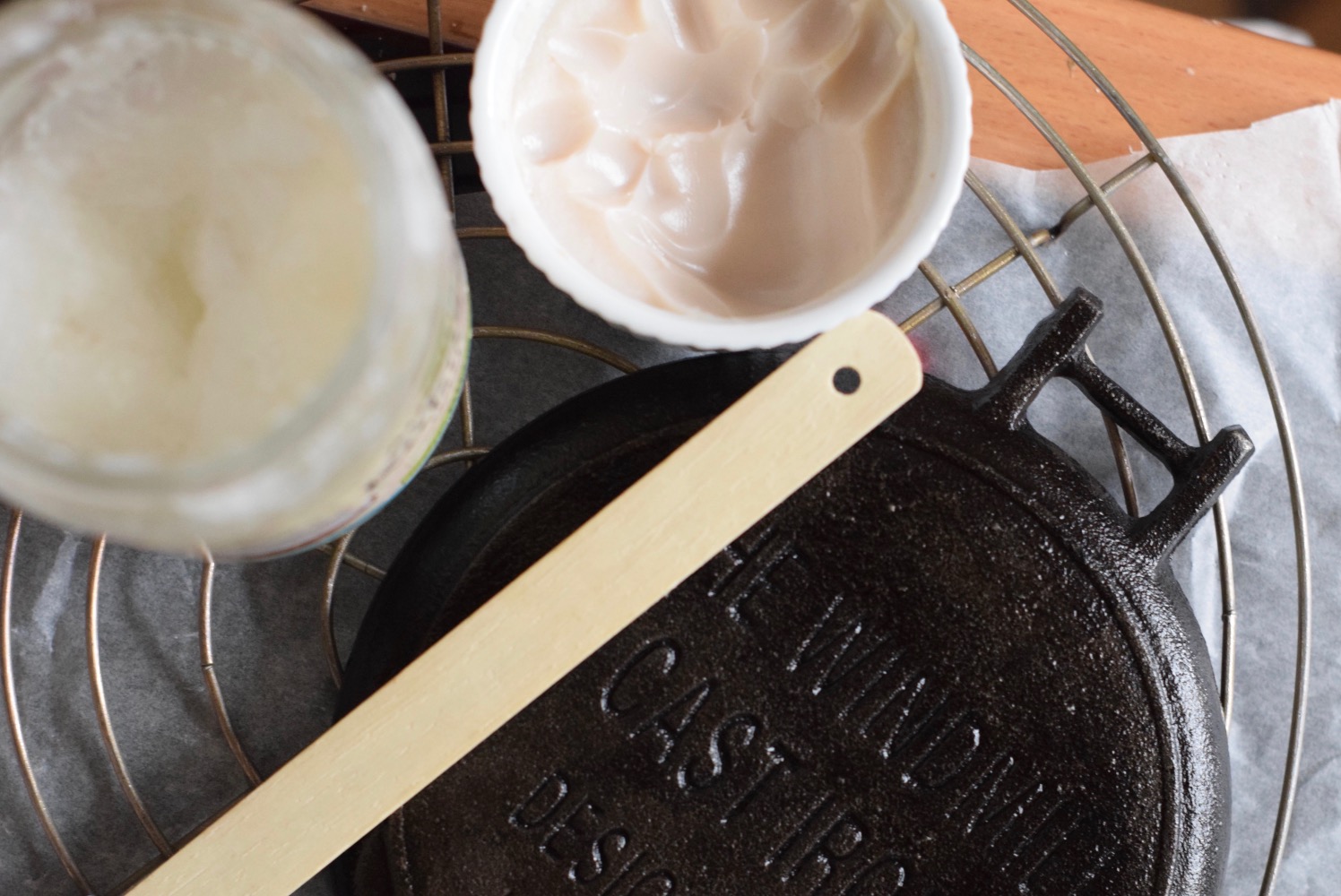
Frequently Asked Questions
Conclusion
Restoring thrifted cast iron is like giving a culinary heirloom a second chance to shine. From scouring local thrift stores to reviving rusty pans, with a bit of elbow grease, a vinegar bath, and the right seasoning, you’ll soon have a trusty kitchen companion that’s about creating memories that last through generations. Happy cooking!
